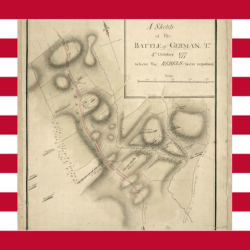
Women and girls have been invaluable during times of war or conflict for all of history, with their roles as nurses, cooks, or caring figures during times of distress often overlooked or discounted. While every position that women could occupy in the military is of utmost importance, soldiers often receive all of the glory following major combat—but until 1948, women in the United States were not even allowed to fight. However, women such as Anna Marie Lane disregarded this law and insisted on contributing themselves as a soldier alongside enlisted men for American independence.
Born in 1755 in Virginia, Anna remains the first documented case of a woman going undercover to fight for the Continental Army in the Revolutionary War, and insisting that she fight alongside other troops despite the ban on women in conflict. The decision surely was not easy, but her husband had volunteered and she decided that she could not sit idly by while he put his life on the line. She took action. Anna dressed in men’s clothing and registered as a soldier for the Continental Army alongside her spouse John Lane. She went on to fight battles in Georgia, New Jersey, and Pennslyvania in the name of American independence.
Anna nearly gave her life for the cause, sustaining a leg injury in the battle of Germantown Pennsylvania in 1777 that was so severe it left her unable to walk for the rest of her life. The injury she had received marked her permanently as a soldier, and signified to the world her courageous ability to travel throughout the colonies at the risk of death to fulfill the duty she believed herself to have. The fight for independence depended on the bravery of every soldier, so she unwaveringly dedicated herself to the cause.
Following the war and the courageous physical endeavors she underwent for an independent America, Anna still had yet another battle to fight—one for a pension. A pension would guarantee her a steady stream of yearly income following her service in the army, but to earn it she had to advocate local courts that her status as a woman did not negate her eligibility. Eventually, she was granted the money that she deserved, and on the pension order next to her name it read: “In the Revolutionary War, in the garb, and with the courage of a soldier, [she] performed extraordinary military services and received a severe wound at the Battle of Germantown.” This validated Anna’s valor and earned her the recognition she rightfully deserved.
Anna contributed to war efforts in a different fashion than most other women, and in doing so became the first of her gender to enlist in the troops of the Continental Army. Her passion and sense of duty knew no bounds, and she even carried forth her courageous personality into her personal advocacy following enlistment. After earning her pension, she went on to work in a Richmond hospital and eventually passed away in 1810 at roughly the age of 55. In modern times, anyone can find a commemorative plack of Anna outside of Capital Square in Richmond Virginia, which pays tribute to her sacrifice and bravery in the Revolutionary War.
